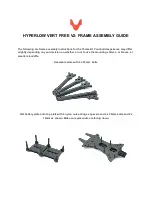
18
V
e
rsio
n 2,
06
.0
8.
201
0 / M
o
d
u
leV
e
rs
io
n 1.
0
Projecting the DECT network
Gigaset N870 IP PRO / LUG IE-UK_IM en / A31008-XXXXX-XXXX-X-XX / preparation.fm / 8/24/18
Synchronisation planning
Base stations that combine to form a DECT wireless network must synchronise with one another to
ensure a smooth transition of the handsets from cell to cell (roaming and handover). No handover
is possible between cells that are not synchronised.
Synchronisation is normally over an air interface, i.e. via the DECT wireless network. This means
that the signal strength between neighbouring base stations must be sufficient for synchronisation.
The guide value is a minimum of –70 dBm, but this can also be influenced by environmental
conditions. For further information on this, refer to Section
A master/slave method is used for synchronisation with DECT. This means that one base station
(master) defines the synchronisation cycle for one or more other base stations (slaves). Since it
is generally the case that not all base stations have a good enough connection to all other base
stations in a multi-cell DECT network, it is not possible to have only one master station and to
configure all others as slaves. Instead, you have to set up a synchronisation hierarchy. You can
configure this hierarchy using the web user interface.
During configuration, assign one level in the synchronisation hierarchy (sync level) to each base
station. Sync level 1 is the highest level; it appears only once in each cluster. A base station always
synchronises itself with a base station that has a better sync level. If it sees several base stations
with a better sync level, it synchronises itself with the base station that has the strongest signal.
If it does not see any base station with a higher sync level, it cannot synchronise. A Gigaset N870
IP PRO base station shows its synchronisation status with an LED.
For information on synchronising base stations, refer to the user guide for the Gigaset N870 IP PRO.
Synchronisation pertains to a cluster. You can set up multiple clusters that are not
synchronised with each other. Transitions are then not possible. It is possible from the
web interface to synchronise a cluster with a base station of another DECT manager
or outside the Gigaset N870 IP Multicell System.
Base stations can also be synchronised over LAN however. To render possible a handover,
a minimum signal strength must be attained here too
Information on LAN synchronisation, and synchronisation with base stations of other
DECT managers, is available in operating instructions “Gigaset N870 IP Multicell System
– Installation, Configuration and Operation”.
We recommend giving the base stations a name during planning and entering the
name in the plan. The name should define the unique location in the building. It is also
helpful to document the assignment of the names to the MAC addresses of the devices.
This makes the configuration of the synchronisation hierarchy in the Web user interface
and the assignment to the installed devices easier later on.
















































